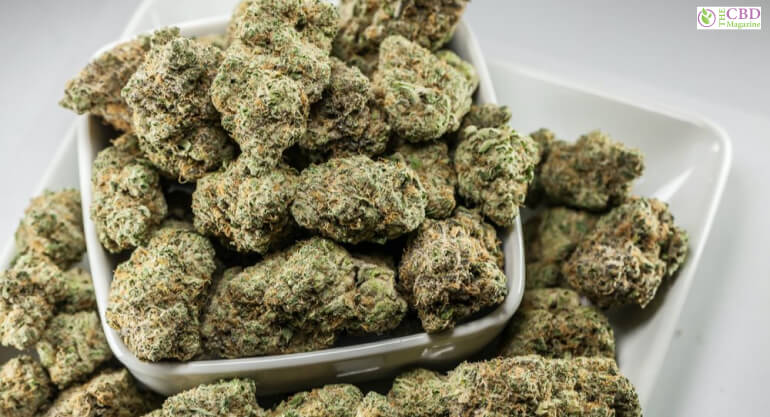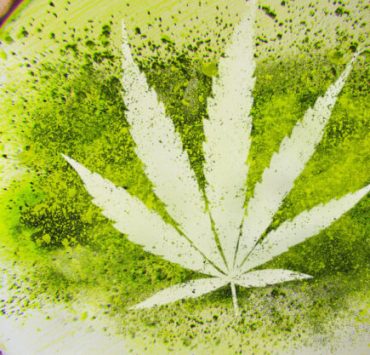PGR weed has been gaining a whole lot of popularity in recent times, and what most people are not noticing is the sheer number of risks associated with it. For people wondering what PGR weed is, PGR stands for Plant Growth Regulators, which means PGR weed is usually grown with the help of these artificial regulators.
These are used for regulating the maturation of plants. For instance, how much the plant is, how much do the plant weighs, and information like that. The PGR in weed is added for fattening up marijuana buds for increasing both their density and weight. As a result, the price of the buds also goes up, deceiving so many customers in the process.
About PGR Weed
PGR weed has proven to be extremely beneficial in terms of financial profits to marijuana growers. However, on the contrary, the same weed has proven to be very harmful to people smoking it. In fact, there are several data and infographics available all over the internet to prove that PGR weed has adverse health impacts.
Let’s discuss this in more detail!
The PGRs commonly used in marijuana are as follows,
- Paclobutrazol
- Daminozide (Alar), and
- Chlormequat Chloride
Paclobutrazol
The reason why Paclobutrazol is used commonly in weed is that it has an attribute to elongate the bud. As a result, these are used for packing all the cells in the cannabis more tightly as well as more densely. But, at the same time, it also obstructs the terpenes from developing in the plant, thereby reducing its capability for producing THC.
In fact, when you choose to consume some PGR weed containing Paclobutrazol, it simply breaks down into harmful compounds known as nitrosamines which happen to be the most carcinogenic element commonly spotted in cigarettes. These can cause fertility-related issues as well as liver damage and similar health problems, which fall under the PGR weed long-term effects.
Daminozide
Daminozide is commonly referred to as Alar. Also, daminozide or Alar is popularly used for maximizing the production of marijuana. Growers love Daminozide for this reason, and this works out only because it reduces the growth pace of the plant. Similar to Paclobutrazol, Daminozide also obstructs the development of terpenes. It also stops cannabinoids (CBD, CBN, THC) from developing as well.
The EPA listed Daminozide as a ‘probable human carcinogen’ and, as a result, was banned from being used in any consumable plants in the United States since 1999. In addition, industry experts and professionals say it should never be smoked or consumed in any way. However, Daminozide was not the only banned substance. There were several other PGR weeds as in elements used as PGR weeds, as in elements used as PGR, that have been banned.
Chlormequat Chloride
Chlormequat Chloride is one of the most common elements found in PGR weed. It reduces the growth pace in the plant, which in turn motivates the flowering process. Moreover, when you add it to the plant, it can also slow down the plant’s growth, reducing its size in the process.
There have been no proven results to point out that even Chlormequat Chloride is carcinogenic, like both Daminozide and Paclobutrazol. However, regular tests are being done to be sure about this. But in case someone consumes large quantities of Chlormequat Chloride, they could suffer from eye irritations, skin irritations, and even organ damage.
Is It Safe To Consume PGR Weed?
PGr weed is made up of plant growth hormones that are synthetic – it’s linked to really adverse health effects, including an increased risk of cancer. Synthetic PGRs might be carcinogenic and, as a result, is not appropriate for human consumption. Naturally grown cannabis pr PGR weed obviously does not pose the same risks to your health.
Besides being carcinogenic potentially, synthetic PGRs might present the following health risks,
- Eye and Skin Irritation,
- Organ Damage,
- Adverse Impact on Fertility.
Of course, this area needs more research in terms of potential health risks that can arise from synthetic PGRs.
How To Spot PGR Weed If Marijuana Is Toxic?

Now that you know what is PGR in weed, you can understand the harmful effects of consuming PGR weed. Short-term effects on your health are just short-term, but have you thought about ‘PGR weed long term effects?’ The long-term effects include serious health effects like organ damage, loss of memory, and lack of energy.
As a result, it is important that you know how to identify PGR weed or even know what does PGR weed looks like. Otherwise, how will you know whether the weed you have been consuming all along is PGR weed or not? But don’t worry because we are here to tell you how to identify whether your weed is toxic or not.
Simply put, scroll down to find out whether you have been smoking PGR weed all this while.
1. The flower or herb will be heavy and dense, like a rock. Remember, good marijuana is never heavy.
2. PGR weed always have pistils in them. Have you noticed that there is red or brown hair in them? Now, most natural marijuana buds have pistils, but if there’s PGR in them, the number of pistils will be excessive, which is different from trichomes.
3. In the PGR weed vs natural weed debate, another important point is dryness. Good quality buds will never have any wetness associated with them.
4. Whenever there are no crystals on the leaf your grower sold you, immediately go back and charge because your grower probably did just fool you.
5. Another way you can spot PGR weed is by its toxic, chemical taste. Good weed will always taste good, and anything of lousy quality won’t. Moreover, when you break the plant into pieces before crushing it, you will notice there is hardly any smell.
6. Since the THC content is pretty low in PGR weed, it will most definitely reduce your energy levels, causing a drop in motivation and a rise in those painful headaches.
Health Hazards Associated With PGR Weed:
As mentioned in the entire article, it’s only natural that there are so many health hazards associated with smoking PGR weed consistently. The most common health hazards of smoking this weed are as follows,
- Damage in liver
- Frequent headaches and migraine
- Frequent dizziness
- Inability to concentrate
- Difficulties in breathing
- Fertility issues
- Skin and eye irritation
- Potential damage in organs.
Frequently Asked Questions:
Check out the most frequently asked questions related to PGR weed mentioned below in detail.
Although most growers will tell you that PGR weed is not that bad but always know it is pretty bad, considering these are chemical ingredients. When you add these to your regular diet, there are going to be heavy consequences like organ failure, cancerous diseases, and other adverse health issues.
The orange hair on weed is known as Pistils. These can also be red or brown in color.
No. Plant growth regulars are bad for the environment. And even for people who consume them, the effects on their health are adverse. The only people they do benefit are growers who use these to make the plant look bigger and exploit consumers with higher rates.
And It’s A Wrap!
After finding out the health hazards associated with PGR weed, there is no point in asking if PGR weed is bad for you. Because the truth is it is bad for you. And not just bad; it can leave adverse impacts on your health. So the best thing you can do is spot the PGR in your weed and quit today.
Just like smoking cigarettes, it is difficult to quit PGR weed, and the chances of you falling into a PGR weed withdrawal is only normal, if not natural. So, the next time you are asked, ‘weed with PGR vs no PGR,’ you will know which alternative to go for! Have a happy high, one that won’t harm your health.
Additional Reading:








